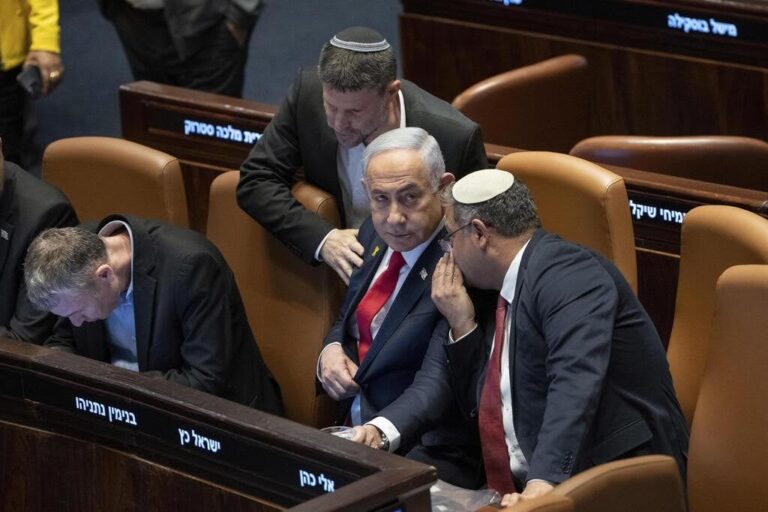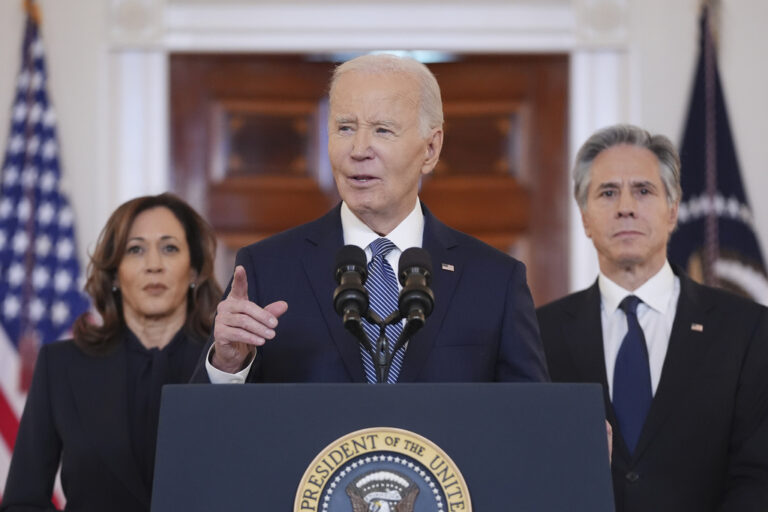 [VIDEO IN EXTENDED ARTICLE]
[VIDEO IN EXTENDED ARTICLE]
“Senator Johnny Isakson fought President Obama’s reckless deal with the Iranian regime. Now Iran is already violating the agreement – illegally testing ballistic missiles, threatening Israel and supporting terrorism in the Middle East.”
– Voiceover in a political ad by Sen. Johnny Isakson, R-Ga., “Terrible Deal”
—
This ad begins with Isakson, who is running for his third Senate term, saying: “I voted against the nuclear deal with Iran for a ton of reasons.” Then, a narrator claims that Iran is already violating the agreement, which the senator opposed, by illegally testing ballistic missiles. (We spotted this ad on the website of our partners, Political TV Ad Archive.) Is that really the case? We did some digging.
—
The formal name for the deal reached in July between Iran and world powers, including the United States, is the Joint Comprehensive Plan of Action (JCPOA), commonly called the “Iran deal.”
Isakson, member of the Senate Committee on Foreign Relations, opposed the deal. But Senate Republicans failed to advance legislation that would have allowed them to reject the agreement.
The agreement was aimed at curbing Iran’s nuclear program in exchange for relief from international sanctions. After the deal was reached, the United Nations Security Council – which had imposed sanctions on Iran to pressure it to negotiate – adopted Resolution 2231. The resolution endorsed the deal and outlined conditions under which sanctions are to be lifted. Under the resolution, ballistic missile restrictions expire after eight years.
This is an important point in the context of Isakson’s ad: The Iran deal is not the same as U.N. Security Council Resolution 2231.
The nuclear agreement was officially implemented this January, after the International Atomic Energy Agency (IAEA) certified that Iran had complied with all the nuclear-related measures it agreed to in July. Yet Iran has continued to test ballistic missiles and said it will not stop.
The deal does not prohibit the testing or development of ballistic missiles. But the U.N. resolution does contain restrictions relating to ballistic missiles. So how is Iran able to continue its testing? Experts say the resolution’s language allows Iran to argue that its ballistic missiles do not fit within the restrictions laid out in Resolution 2231.
Previous U.N. resolutions had stated that the council “decides that Iran shall not undertake any activity related to ballistic missiles capable of delivering nuclear weapons.” The new resolution states “Iran is called upon not to undertake any activity related to ballistic missiles designed to be capable of delivering nuclear weapons, including launches using such ballistic missile technology.”
The language change from “decides that Iran shall not” to “Iran is called upon” represents a softening in tone, signaling a more non-legally-binding appeal. This change was made precisely because the Iran deal does not contain any limits on the country’s missile programs, said Jeffrey Lewis, director of the East Asia Nonproliferation Program at the Middlebury Institute of International Studies in Monterey.
“It is perfectly respectable for opponents of the agreement to object to the Iran deal on these grounds – the JCPOA removes missile-related sanctions without requiring Iran to limit its missile programs,” Lewis said. “This was the hardest part of the agreement for me to accept, even if that sanctions relief only occurs after eight years.”
Further, the new resolution refers to missiles “designed to be capable of delivering nuclear weapons,” rather than “capable” of such delivery. So Iran now argues that its missiles are not “designed” for such capability.
“If one finds that the missiles used are designed for nuclear weapon delivery, it appears to me that there will evidently be also a problem with the compliance with the JCPOA, which bans weaponization activities,” said Olli Heinonen, who led the IAEA’s safeguards section during the 2003-2005 talks between Iran and three European powers (Britain, France and Germany).
That argument is possible but will be difficult to prove, experts say. A legal determination hasn’t been made one way or the other, meaning that the testing is not yet a violation of the Iran deal.
The Isakson ad claims that Iran is “already violating the agreement” through these missile tests. The citation in the ad is an op-ed in U.S. News and World Report that Iran’s missile tests highlight weaknesses in the nuclear deal.
The senator’s staff pointed to news articles describing the tests as a violation of the U.N. resolution. They noted that President Obama had accused Iran of going against the “spirit” of the nuclear agreement, as he did at an April news conference:
“Iran so far has followed the letter of the agreement, but the spirit of the agreement involves Iran also sending signals to the world community and businesses that it is not going to be engaging in a range of provocative actions that are going to scare businesses off.”
But the ad itself does not say that Iran’s actions violate the “spirit” of the deal or that it violates the U.N. resolution. It says Iran is violating the agreement that Isakson opposed. That agreement would be the Iran deal, not the U.N. resolution.
“There’s frustration [over the testing], and we have to look for effective policy tools to impede Iran’s missile program. But none of those tools, unfortunately, is the ability to say this is a violation of the Iran nuclear deal,” said Robert Einhorn, senior fellow at Brookings Institution and former special adviser on arms control and nonproliferation at the State Department.
Einhorn added that it’s difficult to use the Security Council resolution as a policy tool, because the Russians and Chinese are reluctant to view missile tests as a violation of, or inconsistent with, the resolution.
—
Isakson’s ad is about the Iran deal and his opposition to it. It claims that Iran is “already violating” the nuclear agreement by illegally testing ballistic missiles. Yet the actual deal did not have restrictions on ballistic missiles testing. Instead, the U.N. resolution that implements the deal contains the language. A range of experts we consulted said that the testing could be argued as violating the Iran deal but that it will be difficult. It’s an important technical distinction that is not reflected in the ad, ultimately misleading viewers. Moreover, it’s a matter of interpretation as to whether the testing is “illegal” under the resolution.
We understand that it’s probably not as catchy for a narrator in a campaign ad to say, “Western leaders view Iran’s missile tests as a violation of the U.N. resolution passed in tandem” or that the testing is “inconsistent with the spirit of the Iran deal.” But both of those phrases are accurate, and are certainly preferable to the sweeping, inaccurate claim in the ad.
In the following video posted by his Senate campaign, Sen. Johnny Isakson, R-Ga., discusses his opposition to the nuclear deal with Iran.
(c) 2016, The Washington Post · Michelle Ye Hee Lee










